Parque nacional y natural de Doñana
Doñana es un espacio natural protegido español situado en las provincias de Huelva, Sevilla y Cádiz, Andalucía.[5] Comprende tanto el Parque Nacional de Doñana (creado en 1969) como el Parque Natural de Doñana (también cononcido como entorno de Doñana o preparque, creado en 1989 y ampliado en 1997). Cuenta con una superficie de 122 487 ha, 54 251 ha de parque nacional y 68 236 ha de parque natural. Su gran extensión de marismas acoge durante el invierno a numerosas especies de aves acuáticas, que suelen alcanzar cada año los 200 000 individuos.
Debido a su privilegiada situación geográfica entre 2 continentes y su proximidad al lugar de encuentro del Atlántico y el Mediterráneo, el estrecho de Gibraltar, en Doñana se pueden observar más de 300 especies diferentes de aves a lo largo del año, al ser lugar de paso, cría e invernada para miles de ellas (acuáticas y terrestres) europeas y africanas. Aquí reposan aves acuáticas de toda Europa Occidental, localizándose infinidad de especies en las marismas y alrededores, procedentes de África y Europa. Con diferentes instituciones científicas en su interior que velan por un desarrollo adecuado de las comarcas limítrofes y la conservación de algunas especies muy delicadas que habitan en él, se considera la mayor reserva ecológica de Europa.[6] Fue declarado Patrimonio de la Humanidad por la Unesco en 1994.[7] En 2006 el parque recibió 376 287 visitas.[8] Su nombre proviene, según algunos, del de Doña Ana de Silva y Mendoza, esposa del VII duque de Medina Sidonia. Según otros, de Ana Mallarte, casada con Sancho de Herrera, arrendatario de los pastos de la parte de El Palacio en 1545. Con 300 287 visitantes anualmente (2015), Doñana es el undécimo parque nacional de España en número de visitantes.[9]
- 1 Localización
- 2 Historia
- 3 Clima
- 4 Flora
-
5
Fauna
- 5.1 Peces
- 5.2 Reptiles y anfibios
- 5.3 Aves
-
5.4
Mamíferos
- 5.4.1 El lince ibérico
- 5.4.2 Caballos
- 6 La marisma
- 7 Turismo
- 8 Problemas medioambientales
- 9 Estación Biológica de Doñana
- 10 Otros lugares de interés
- 11 La Romería de El Rocío y su relación con el Coto
- 12 Véase también
-
13
Referencias
- 13.1 Bibliografía
- 14 Enlaces externos
Links
Images Gallery
-
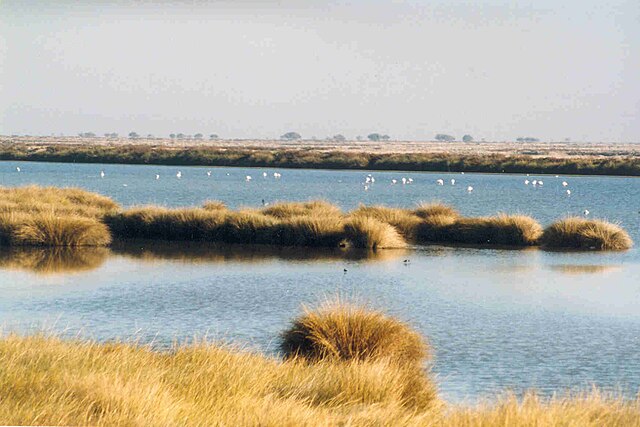 Zona de marismas (Huelva).
Zona de marismas (Huelva).
-
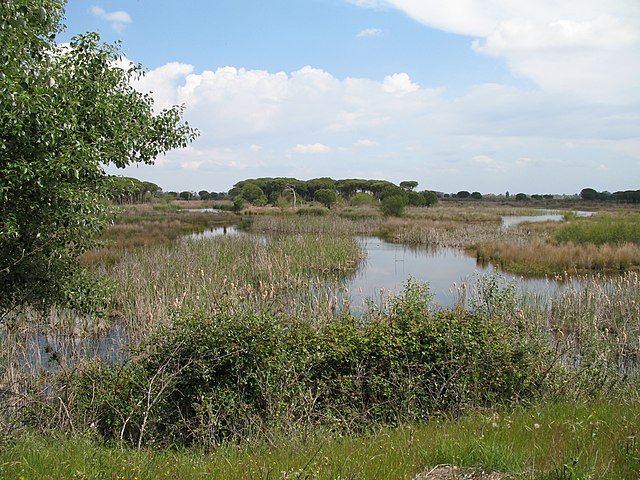 Lagunas de El Acebuche.
Lagunas de El Acebuche.
-
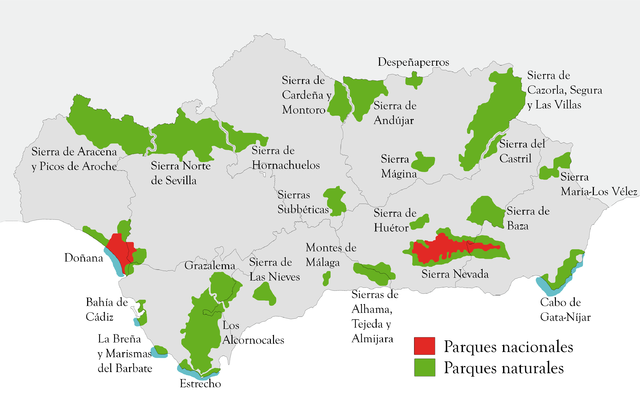
-
-

-

-
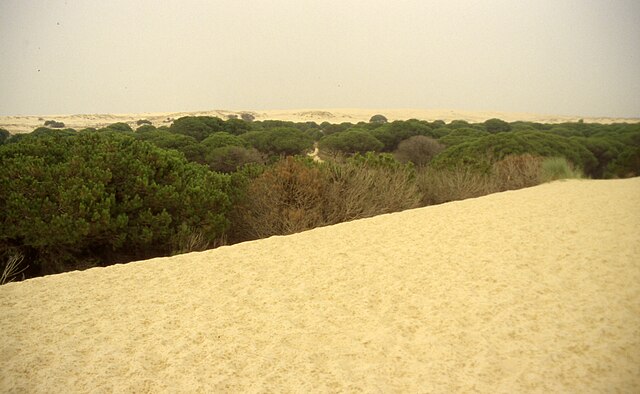
-

-
 Doñana desde el Guadalquivir
Doñana desde el Guadalquivir
-
 Observatorio El Porrón
Observatorio El Porrón
-
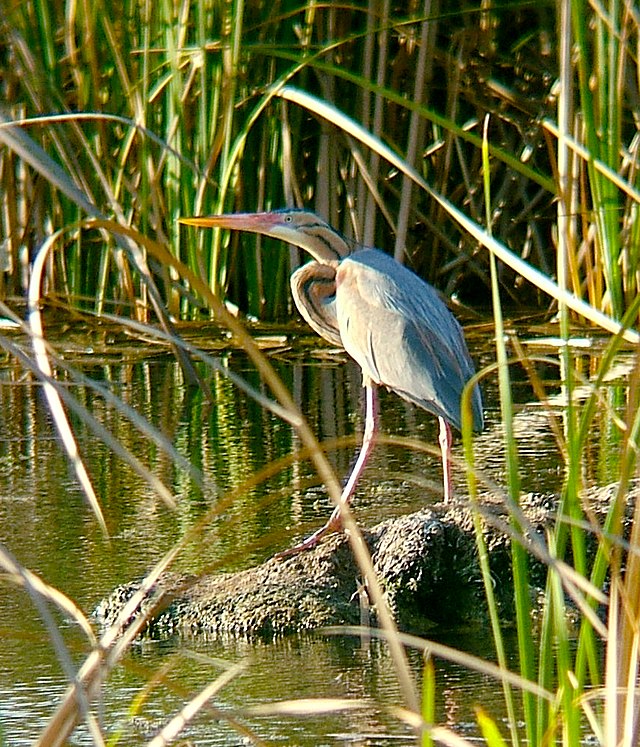
-
 Lince ibérico, una de las especies más protegidas del espacio natural.
Lince ibérico, una de las especies más protegidas del espacio natural.
-
 Pinar de La Algaida, en Sanlúcar.
Pinar de La Algaida, en Sanlúcar.
-

-

-
-

-

-

-
 Alfonso X el Sabio creó un coto real de caza en lo que actualmente es Doñana.
Alfonso X el Sabio creó un coto real de caza en lo que actualmente es Doñana.
-
 El duque de Fernandina lancea un jabalí en Doñana, en presencia de la emperatriz Eugenia de Montijo. Grabado de Charles Maurand para Le Monde Illustré (1863).
El duque de Fernandina lancea un jabalí en Doñana, en presencia de la emperatriz Eugenia de Montijo. Grabado de Charles Maurand para Le Monde Illustré (1863).
-
 «Montería de jabalíes en el coto de Doña Ana» (segunda mitad del siglo XIX).
«Montería de jabalíes en el coto de Doña Ana» (segunda mitad del siglo XIX).
-
Vista de la orilla del parque con el río Guadalquivir
-
 Pinos piñoneros.
Pinos piñoneros.
-
Panorámica de un "corral" de vegetación entre las dunas
-

-

-
-
Dunas de Doñana.
-
Aspecto de la ruta para visitantes
-
 Palacio del Acebrón.
Palacio del Acebrón.
-
En el parque hay restos de fortificaciones como la torre de la Carbonera.
-
Simpecado cruzando el Coto de Doñana en el camino de vuelta de la romería de El Rocío, mayo de 2009.
-
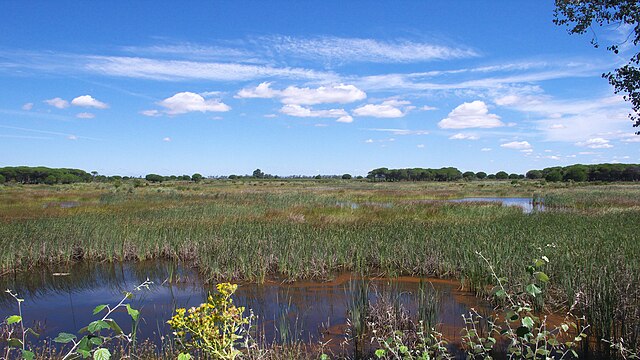
-

-

-

-
-

-

-

-
-
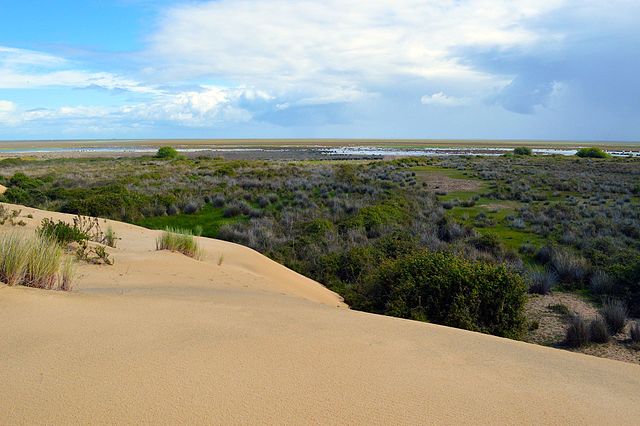
-

-
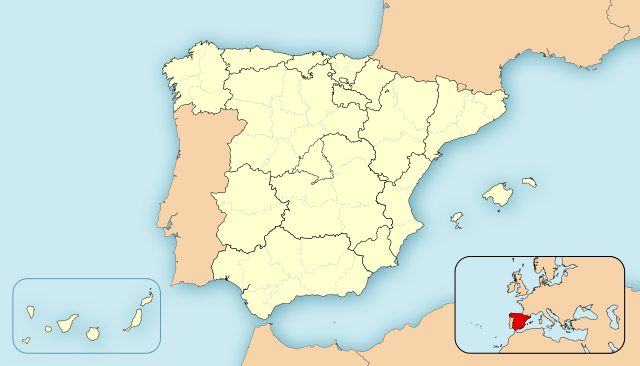
-
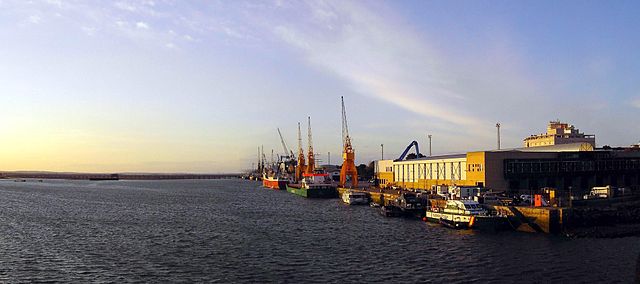
-

-

-
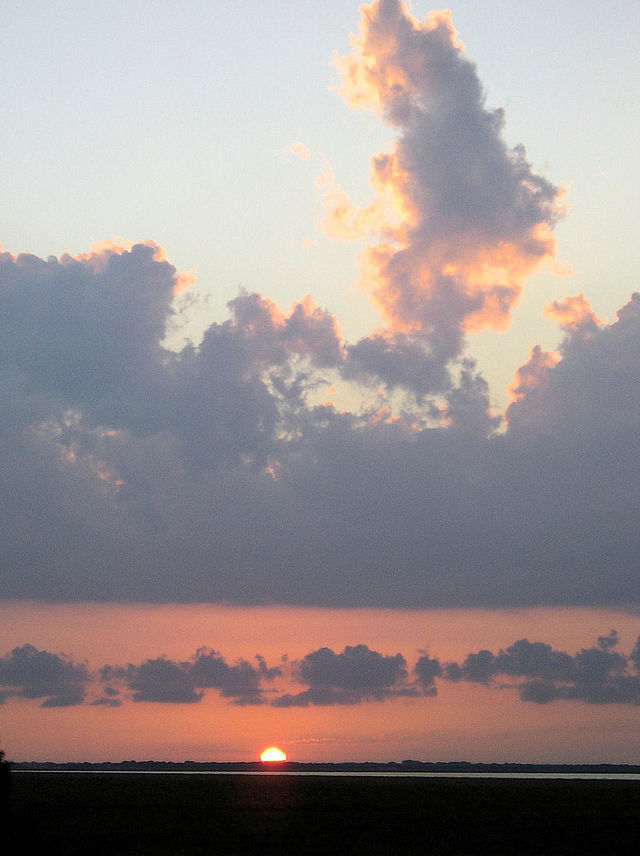
-

-

-

-

-
-

-

-
-
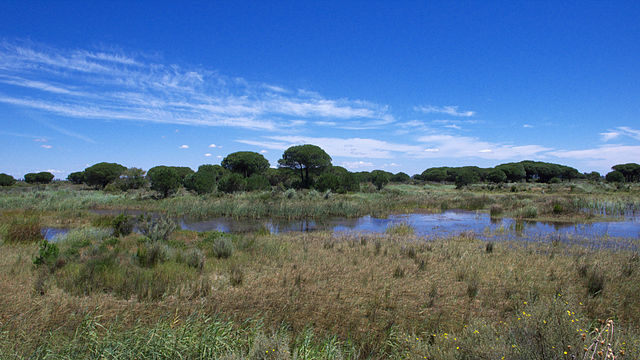
-

-
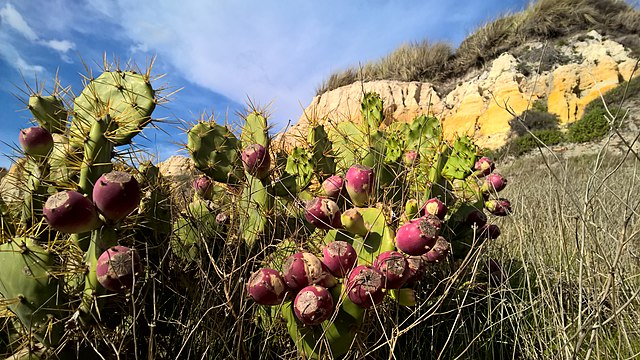
-

-

Comments
-
Doñana National Park in Andalusia occupies the right bank of the Guadalquivir river at its estuary on the Atlantic Ocean. It is notable for the great diversity of its biotopes, especially lagoons, marshlands, fixed and mobile dunes, scrub woodland and maquis. It is home to five threatened bird species. It is one of the largest heronries in the Mediterranean region and is the wintering site for more than 500,000 water fowl each year.
2 months ago -
Marvelous area, paradise for bird watcher and not only! Many type of landscape as sand dune, marshes, woods and little villages. A splendid occasion to live in perfect harmony with Nature.
3 years ago -
Fantastic place to visit. You need to get an official tour with the guide, but it is worth it. You can see a lot of different animals in a wildlife. We saw a lot of deers, wild boar, wild horses, many different kind of birds. Unfortunately we didn't see the lynx.
2 years ago -
Lovely sands that stretch for miles. Peaceful unspoilt area. Crossed by ferry from Sanlucar €8 return
2 years ago -
We visited for 2 nights 3 days staying at the Parador at Mazagon. We love nature so this was an ideal location for us. We spent most of our free time visiting the various information centres in the area and enjoying the walks that we could do and the numerous visual displays set up in these centres. For obvious reasons, in order to visit the inner parkland area it is necessary to book ahead and go on an escorted keep ride which lasted 4 hrs. They do it twice daily early morning and late evening avoiding the heat of mid-day.
3 years ago -
Probably the best time to visit is in April May especially if green is your favourite colours as it is mine. The nature, pine trees forests, mixed with eucalyptus and all sort of bushes looks heavenly and the variety of birds and tones on chirps just adds up to this feeric scenary. If you like nature and tracking, here are quite a few extraordinary routes starting with Rociana and El Albaron as well as strolling around the marsh edging El Rocio village, very authentic, pretty eqvestric sceneary, no pavements at all, but definitely fascinating. My son had a ride on a poney, we've been able to watch the flamingos, what more can you wish for ?
2 years ago -
I went on the morning tour to avoid the afternoon heat. The tour guide, Pili, was great explaining interesting things about the park and its flora and fauna. There was a small cold water for each one of us on the bus.
4 years ago -





























































